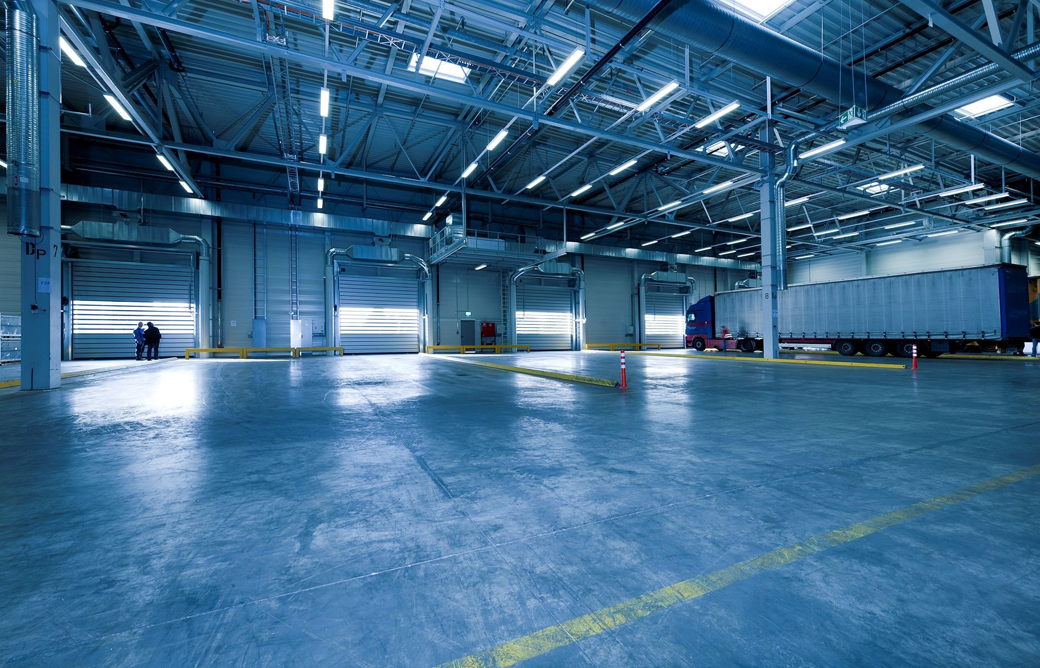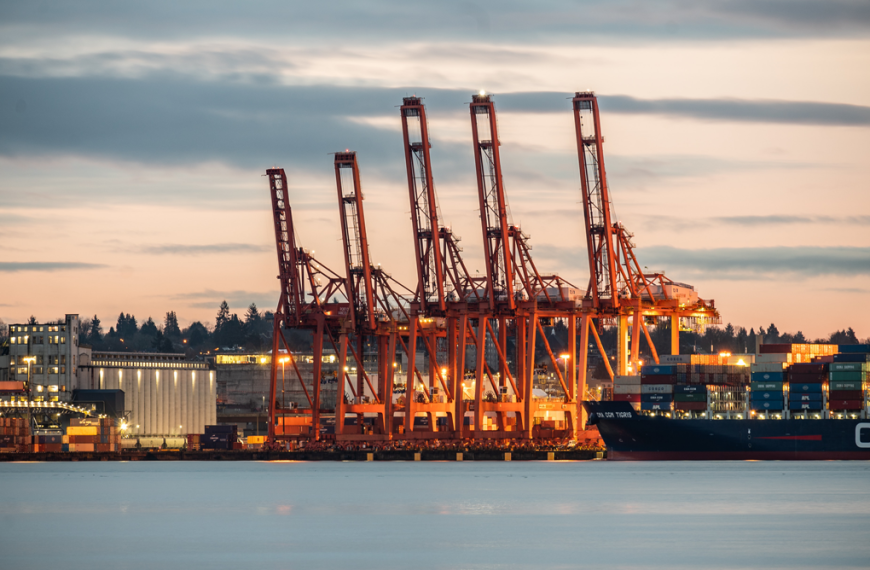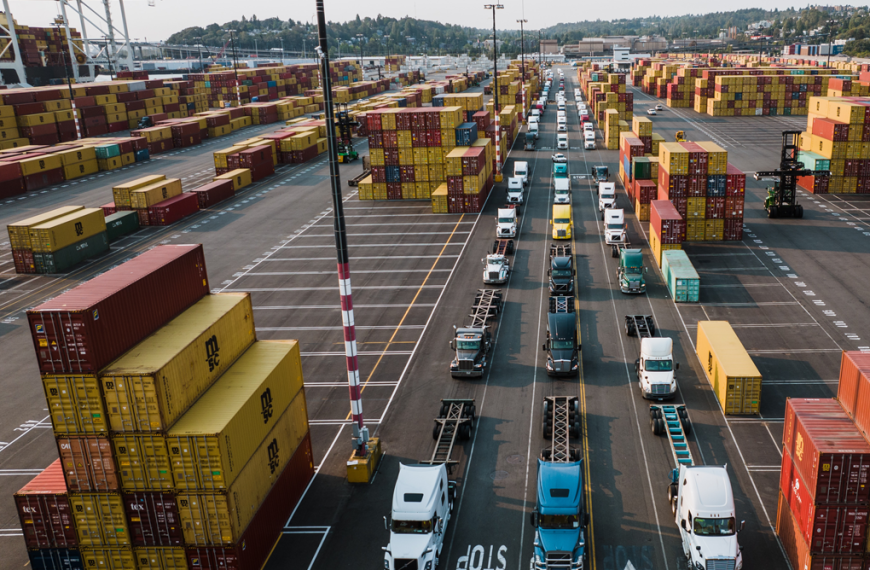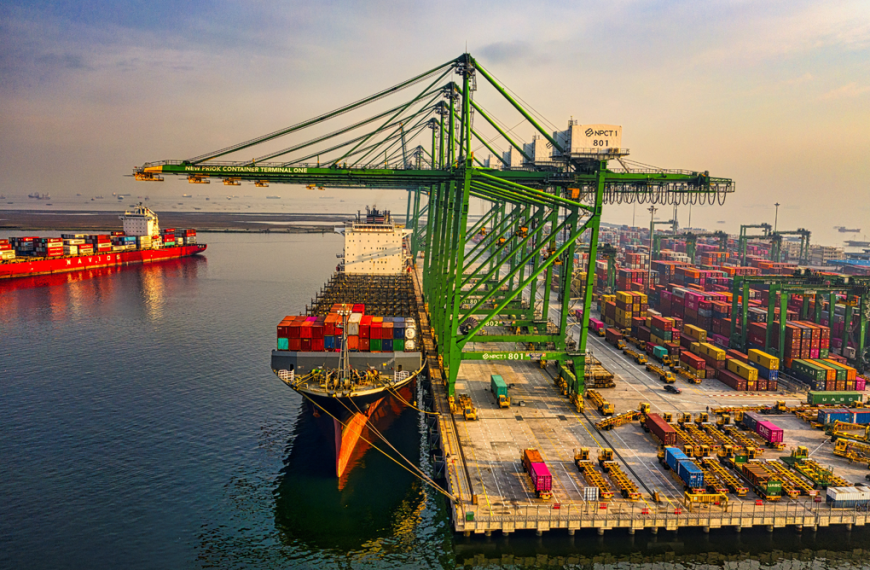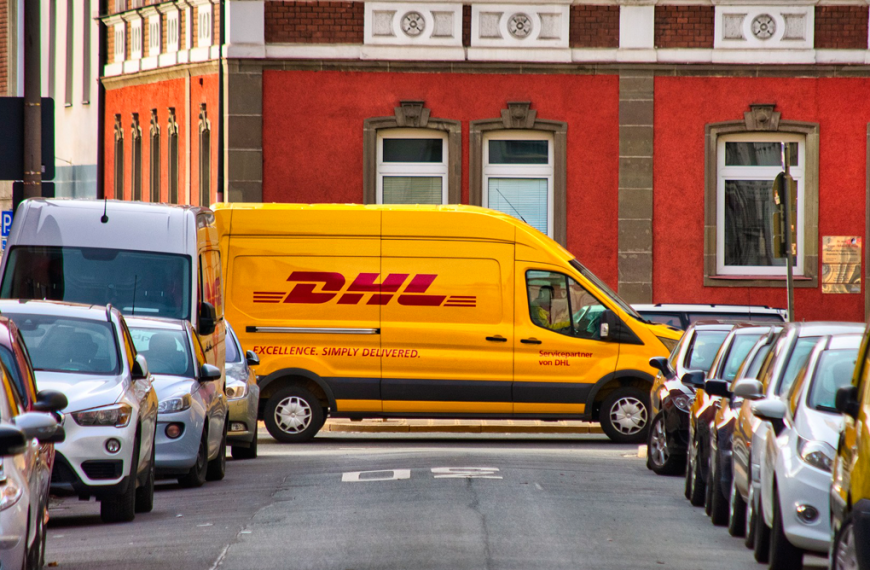Ensuring freshness is paramount in cold chain logistics. Learn about quality control practices that guarantee the highest level of freshness. Explore temperature management, packaging techniques, and compliance with regulatory standards. Discover the importance of risk assessment, contingency planning, and continuous improvement.
Preserve the quality of perishable shipments during transportation and storage. Enhance your understanding of quality control in cold chain logistics and optimize freshness throughout the supply chain. Unlock strategies to maintain product integrity and customer satisfaction. Stay ahead in the competitive market with effective quality control measures for freshness assurance.
- The Crucial Role of Quality Control in Cold Chain Logistics
- 1. Safeguarding Freshness Every Step of the Way
- 2. Leveraging Digital Freight Forwarding Technologies
- 3. Fortifying Freight Transportation Security
- 4. The Indispensable Role of Freight Brokerage
- 5. Excelling in Last-Mile Delivery
- 6. Choosing the Right Mode: Sea Freight vs. Air Freight
- 7. The Power of Collaboration with Freight Forwarders
- Key Components of an Effective Quality Control System
- Temperature Management and Monitoring: Ensuring Quality in Cold Chain Logistics
- 1. The Significance of Temperature Control
- 2. Implementing Advanced Temperature Monitoring Systems
- 3. Precise Packaging and Insulation Techniques
- 4. Quality Standards and Regulatory Compliance
- 5. Collaborative Approach with Freight Forwarders
- 6. Continuous Monitoring and Data Analysis
- 7. Last-Mile Delivery Considerations
- Packaging and Insulation: Safeguarding Quality in Cold Chain Logistics
- Compliance with Regulatory Standards: Ensuring Excellence in Cold Chain Logistics
- Risk Assessment and Contingency Planning: Safeguarding Cold Chain Logistics
- Driving Excellence: Continuous Improvement and Performance Metrics in Cold Chain Logistics
- Frequently Asked Questions (FAQs)
- Related Articles
The Crucial Role of Quality Control in Cold Chain Logistics
In the intricate world of cold chain logistics, where precision and efficiency are paramount, quality control emerges as a vital element in ensuring the seamless flow of goods. From preserving freshness to optimizing customer satisfaction, quality control plays a pivotal role in the realm of freight transportation. Let’s delve into the significance of quality control and its impact on the cold chain.
1. Safeguarding Freshness Every Step of the Way
Maintaining the freshness and integrity of temperature-sensitive shipments demands unwavering attention to detail. From loading products onto freight transportation vehicles to their final destination, each stage must be meticulously handled. Proper packaging techniques, optimal storage conditions, and adherence to strict temperature requirements are crucial in preserving the freshness of perishable goods.
2. Leveraging Digital Freight Forwarding Technologies
The advent of digital freight forwarding has revolutionized the landscape of logistics operations, including cold chain processes. Harnessing advanced technologies, such as real-time monitoring and tracking systems, empowers shippers to maintain strict control over temperature conditions throughout the entire journey. By leveraging IoT-enabled devices and data-driven insights, businesses can swiftly intervene when deviations occur, ensuring that perishable goods remain fresh and of the highest quality.
3. Fortifying Freight Transportation Security
Preserving freshness goes hand in hand with ensuring robust freight transportation security measures. Protecting shipments from theft, spoilage, or unauthorized access is of utmost importance in the cold chain. Employing tamper-evident seals, state-of-the-art surveillance systems, and secure storage facilities bolsters the confidence in the integrity of the goods, allowing them to reach their destination in optimal condition.
4. The Indispensable Role of Freight Brokerage
In the intricate web of freight logistics, freight brokerage emerges as a valuable ally in quality control efforts. With their extensive knowledge and industry expertise, freight brokers serve as intermediaries, connecting shippers with carriers specializing in cold chain logistics. They negotiate competitive freight rates, optimize routes, and ensure seamless coordination, ultimately enabling timely and efficient transportation that upholds freshness.
5. Excelling in Last-Mile Delivery
The final leg of the cold chain journey, last-mile delivery, is a crucial touchpoint for freshness preservation. Innovative strategies, such as route optimization and collaborative partnerships, play a significant role in ensuring optimal delivery. Leveraging real-time tracking systems, agile delivery options, and local partnerships allows businesses to navigate the complexities of the last mile efficiently, guaranteeing that perishable goods reach their destination promptly and in prime condition.
6. Choosing the Right Mode: Sea Freight vs. Air Freight
Selecting the appropriate mode of transportation is a critical decision when it comes to maintaining freshness. Sea freight offers cost-effectiveness for large shipments, while air freight ensures speed and reduced transit times for time-sensitive goods. Evaluating factors such as transit times, freight rates, and specific cargo requirements empowers businesses to make informed decisions that strike a balance between freshness and efficiency.
7. The Power of Collaboration with Freight Forwarders
Partnering with experienced freight forwarders unlocks a wealth of knowledge and expertise in cold chain logistics. These professionals possess an intricate understanding of freight logistics and maintain extensive networks of carriers and suppliers. Collaborating with freight forwarders ensures optimal handling, adherence to strict quality control protocols, and excellence in freshness preservation throughout the cold chain.
Quality control serves as the cornerstone of success in cold chain logistics. By prioritizing meticulous handling, embracing digital innovations, fortifying security measures, and leveraging the expertise of freight forwarders, businesses can uphold the freshness and integrity of their perishable shipments. In a world where customer satisfaction is paramount, quality control becomes a competitive advantage that sets businesses apart in the dynamic realm of cold chain logistics.

Key Components of an Effective Quality Control System
In the dynamic world of cold chain logistics, where precision and reliability are essential, implementing an effective quality control system is crucial for ensuring the seamless flow of goods. From optimizing freight rates to fortifying freight transportation security, various components come together to create a robust quality control framework. Let’s explore the key elements that contribute to an efficient quality control system in cold chain logistics.
1. Comprehensive Temperature Monitoring
Temperature control lies at the heart of quality control in cold chain logistics. Implementing state-of-the-art digital freight forwarding technologies allows for real-time temperature monitoring throughout the entire transportation process. Utilizing IoT-enabled devices, advanced sensors, and data analytics empowers logistics professionals to proactively address temperature deviations and ensure the preservation of product freshness.
2. Stringent Packaging Standards
Packaging plays a crucial role in protecting perishable goods during transit. Adhering to industry-best practices for freight logistics and utilizing specialized packaging materials tailored to the specific requirements of different products help safeguard against spoilage, contamination, and damage. This includes using insulated containers, thermal blankets, and moisture-resistant packaging to maintain optimal conditions and preserve product quality.
3. Robust Security Measures
Maintaining freight transportation security is vital for protecting the integrity of perishable shipments. Implementing stringent security protocols, such as tamper-evident seals, secure storage facilities, and real-time tracking systems, enhances the security and traceability of goods. This not only safeguards against theft and unauthorized access but also allows for quick intervention in the event of any security breaches.
4. Streamlined Documentation and Traceability
Accurate documentation and traceability are critical for effective quality control. Implementing freight brokerage systems and digital documentation solutions streamline the tracking and tracing of shipments, ensuring visibility at every stage of the supply chain. This enables prompt identification of potential issues, simplifies compliance with regulations, and enhances overall operational efficiency.
5. Rigorous Training and Compliance
A well-trained and knowledgeable workforce is essential for maintaining quality control standards. Regular training programs should be conducted to educate personnel on best practices, proper handling procedures, and compliance requirements specific to cold chain logistics. Ensuring adherence to industry regulations and quality certifications fosters a culture of excellence and reliability within the organization.
6. Continuous Improvement and Monitoring
An effective quality control system is a continuous process that requires ongoing monitoring and improvement. Regular audits, performance evaluations, and data analysis allow for the identification of areas for enhancement. This data-driven approach enables businesses to implement corrective measures, optimize processes, and consistently raise the bar for quality control standards.
7. Collaboration with Reliable Freight Forwarders
Partnering with experienced freight forwarders who specialize in cold chain logistics is invaluable for establishing an effective quality control system. These professionals possess in-depth knowledge of cold chain logistics requirements, maintain extensive networks of reliable carriers, and offer comprehensive solutions for temperature-controlled transportation. Collaborating with freight forwarders ensures seamless coordination, adherence to quality control protocols, and the successful delivery of perishable goods.
An effective quality control system in cold chain logistics comprises various interconnected components. From comprehensive temperature monitoring and stringent packaging standards to robust security measures and streamlined documentation, each element contributes to the seamless transportation and preservation of perishable goods.
By prioritizing continuous improvement, training, and collaboration with experienced freight forwarders, businesses can establish a robust quality control framework and achieve excellence in cold chain logistics operations.

Temperature Management and Monitoring: Ensuring Quality in Cold Chain Logistics
In the intricate world of cold chain logistics, maintaining precise temperature control is paramount to ensure the integrity and freshness of perishable goods throughout their journey. From optimizing freight rates to leveraging digital freight forwarding technologies, temperature management and monitoring play a crucial role in safeguarding product quality. Let’s explore the key aspects of temperature control in cold chain logistics and how they contribute to ensuring top-notch freight transportation.
1. The Significance of Temperature Control
Temperature control is a critical factor in preserving the quality, safety, and shelf life of temperature-sensitive products during transportation. Whether it’s pharmaceuticals, fresh produce, or other perishable goods, maintaining the optimal temperature range is essential to prevent spoilage, degradation, or loss of efficacy. Effective temperature management is the foundation of a successful cold chain logistics operation.
2. Implementing Advanced Temperature Monitoring Systems
Utilizing digital freight forwarding and IoT-enabled devices, logistics professionals can employ advanced temperature monitoring systems. These systems continuously track and record temperature data in real-time, providing valuable insights into the condition of the cargo throughout the journey. With the ability to set temperature thresholds and receive alerts for any deviations, proactive measures can be taken to mitigate risks and maintain the desired temperature range.
3. Precise Packaging and Insulation Techniques
Proper packaging and insulation techniques are essential to create a controlled environment within shipping containers. Insulated containers, thermal blankets, and specialized packaging materials play a pivotal role in minimizing temperature fluctuations and maintaining product integrity. Employing these techniques, combined with strategic placement of temperature sensors, ensures that the goods are shielded from external temperature variations.
4. Quality Standards and Regulatory Compliance
Adhering to industry-specific quality standards and regulatory requirements is imperative in cold chain logistics. These standards outline the temperature ranges, handling procedures, and documentation necessary to ensure compliance and product safety. By following these guidelines, businesses can demonstrate their commitment to quality control and build trust with customers and regulatory authorities.
5. Collaborative Approach with Freight Forwarders
Partnering with experienced freight forwarders specializing in cold chain logistics is invaluable for effective temperature management. These professionals possess the expertise, network, and resources to handle temperature-sensitive shipments with precision. Collaborating with freight forwarders ensures access to reliable carriers, temperature-controlled facilities, and optimized transportation routes, thereby minimizing the risks associated with temperature excursions.
6. Continuous Monitoring and Data Analysis
Continuous monitoring of temperature data, combined with data analysis, enables proactive decision-making and process improvement. By analyzing temperature trends, identifying potential bottlenecks, and implementing corrective actions, businesses can enhance their temperature management practices. Regular performance reviews, audits, and feedback loops contribute to a culture of continuous improvement and ensure the highest level of quality control.
7. Last-Mile Delivery Considerations
Temperature management remains critical even during the last-mile delivery phase. Implementing efficient last-mile delivery strategies, such as utilizing refrigerated vehicles, optimizing routes, and minimizing delivery times, helps to maintain the temperature integrity of the goods until they reach their final destination. Collaboration with local partners and effective communication further enhances the success of last-mile temperature control.
Temperature management and monitoring are fundamental to ensuring quality in cold chain logistics. By leveraging advanced monitoring systems, precise packaging techniques, and complying with quality standards, businesses can mitigate risks, maintain product integrity, and meet regulatory requirements.
Collaboration with experienced freight forwarders and continuous monitoring contribute to a robust temperature control framework, facilitating the seamless and secure transportation of temperature-sensitive goods.
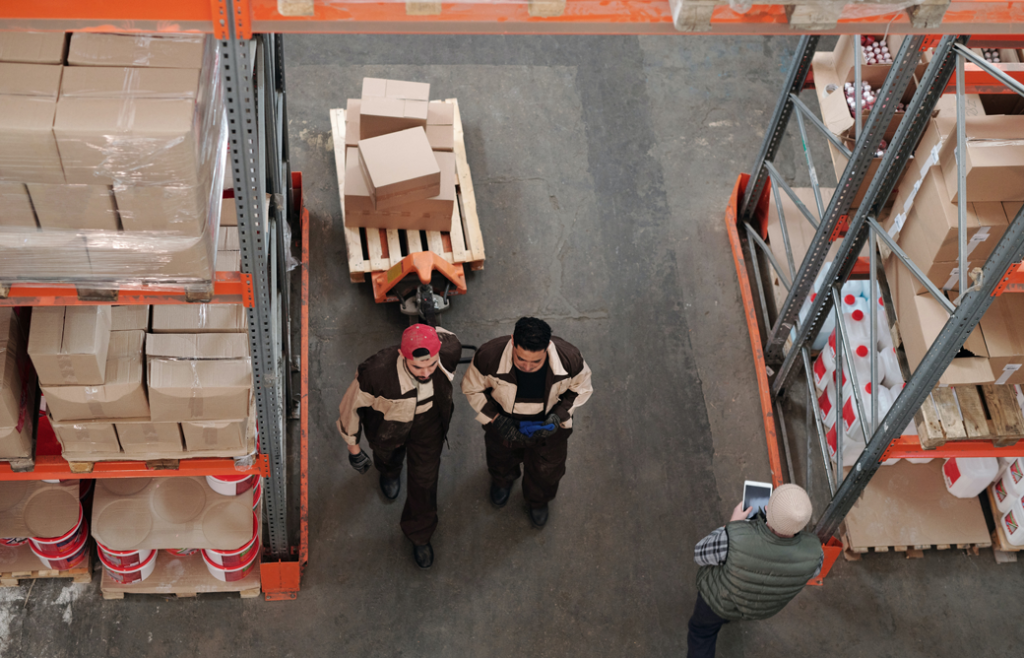
Packaging and Insulation: Safeguarding Quality in Cold Chain Logistics
In the dynamic realm of cold chain logistics, the effective management of packaging and insulation is paramount to ensure the integrity and freshness of temperature-sensitive goods. From optimizing freight rates to enhancing freight transportation security, the right packaging and insulation strategies are essential components in the smooth functioning of the supply chain. In this blog post, we will delve into the significance of packaging and insulation in cold chain logistics and explore the various techniques that help maintain product quality during transit.
1. Customized Packaging Solutions
Each product has unique requirements, necessitating tailored packaging solutions to preserve its quality and protect it from temperature fluctuations. The selection of appropriate packaging materials, such as insulated containers, thermal wraps, and cushioning materials, is crucial to maintaining the desired temperature range. By designing customized packaging solutions, businesses can ensure that their goods remain in optimal condition throughout the transportation process.
2. Insulation Techniques
Insulation plays a pivotal role in mitigating temperature variations within shipping containers. Employing insulation techniques helps create a controlled environment that shields products from external temperature fluctuations. Some commonly used insulation methods include:
- Double-Walled Containers: These containers consist of an outer layer that provides structural support and an inner layer with insulating properties to reduce heat transfer.
- Thermal Blankets: These blankets are designed to wrap around shipments and offer additional insulation to protect against temperature extremes.
- Phase Change Materials: These materials absorb and release thermal energy, maintaining a consistent temperature within the container.
3. Packaging and Insulation Guidelines
To ensure quality control, it is crucial to follow industry-specific packaging and insulation guidelines. Regulatory bodies often provide standards and best practices to maintain the integrity of temperature-sensitive products. Adhering to these guidelines helps businesses demonstrate their commitment to quality and compliance. Here are a few key guidelines to consider:
- Temperature Range: Determine the appropriate temperature range for your specific product and select packaging materials accordingly.
- Sealing and Containment: Ensure proper sealing of packages to prevent temperature leaks and contamination risks.
- Labeling: Clearly label packages with temperature-sensitive indicators to facilitate proper handling and transportation.
4. Monitoring and Tracking Technologies
Utilizing advanced technologies for monitoring and tracking is instrumental in ensuring temperature control during transportation. Digital freight forwarding solutions and IoT-enabled devices provide real-time data on temperature conditions. By leveraging these technologies, logistics professionals can proactively monitor temperature deviations and take immediate corrective actions.
5. Collaboration with Freight Forwarders
Partnering with experienced freight forwarders specializing in cold chain logistics is invaluable. These professionals possess the expertise, resources, and network to handle temperature-sensitive shipments with precision. They can offer insights into optimized routes, proper storage facilities, and efficient transportation options such as sea freight or air freight. Collaborating with freight forwarders ensures that packaging and insulation align with industry standards and best practices.
To provide a comprehensive overview, here is an example table highlighting the key considerations for packaging and insulation in cold chain logistics:
| Considerations | Description |
|---|---|
| Temperature Range | Define the ideal temperature range for the product |
| Insulation Materials | Select appropriate materials to minimize heat transfer |
| Sealing | Ensure secure sealing of packages to prevent temperature leaks |
| Monitoring Systems | Employ real-time monitoring to track temperature conditions |
| Regulatory Compliance | Adhere to industry guidelines and standards |
Packaging and insulation play a critical role in preserving the quality of temperature-sensitive goods during cold chain logistics. By implementing customized packaging solutions, following industry guidelines, and utilizing advanced monitoring technologies, businesses can ensure that their products remain fresh and intact throughout the transportation process.
Collaborating with experienced freight forwarders further enhances the efficiency and reliability of packaging and insulation strategies. By prioritizing these key components, companies can safeguard the quality and integrity of their goods, ultimately delivering value to customers in the world of freight transportation.

Compliance with Regulatory Standards: Ensuring Excellence in Cold Chain Logistics
In the fast-paced world of cold chain logistics, compliance with regulatory standards is crucial to maintain the highest levels of quality, safety, and reliability. From optimizing freight rates to upholding freight transportation security, adherence to regulatory guidelines is a key aspect of operating in the global world of freight transportation. In this blog post, we will explore the significance of compliance with regulatory standards in cold chain logistics and discuss strategies to ensure excellence in this dynamic industry.
1. Understanding Regulatory Requirements
Regulatory standards govern various aspects of cold chain logistics, including temperature control, documentation, labeling, and handling procedures. Familiarize yourself with the specific regulations relevant to your industry and region. Stay updated on any revisions or new requirements to ensure ongoing compliance. Knowledge is the first step toward achieving excellence in regulatory compliance.
2. Documentation and Record-Keeping
Accurate documentation is essential in demonstrating compliance and facilitating traceability in the cold chain. Maintain detailed records of temperature monitoring, storage conditions, and transportation processes. Document any deviations, corrective actions taken, and quality control measures implemented. Effective record-keeping enables easy retrieval of information, assists in audits, and helps identify areas for improvement.
3. Robust Quality Management Systems
Implementing a robust quality management system (QMS) is vital for achieving and maintaining compliance with regulatory standards. A QMS provides a framework for documenting procedures, establishing controls, and managing risks. It encompasses activities such as supplier qualification, internal audits, training programs, and continuous improvement initiatives. By integrating quality into every aspect of the cold chain logistics process, businesses can ensure adherence to regulatory standards.
4. Staff Training and Competence
Well-trained and competent staff are essential for achieving compliance. Provide comprehensive training programs that cover regulatory requirements, best practices, and proper handling procedures. Equip your team with the knowledge and skills needed to effectively carry out their roles within the cold chain. Regularly assess employee competence and offer opportunities for continuous professional development to stay abreast of evolving regulatory landscape.
5. Partnerships with Certified Freight Forwarders
Collaborating with freight forwarders who are certified and experienced in cold chain logistics is invaluable. These partners possess the necessary expertise, infrastructure, and understanding of regulatory standards to ensure compliance throughout the supply chain. Working with certified freight forwarders provides reassurance that your shipments are handled in accordance with the required regulations, including the proper storage and transportation of temperature-sensitive goods.
To provide a comprehensive overview, here is an example table showcasing some key regulatory standards and their corresponding requirements in the cold chain logistics industry:
| Regulatory Standard | Requirements |
|---|---|
| Good Distribution Practice (GDP) | Ensure proper storage, transport, and distribution of products |
| Hazard Analysis and Critical Control Points (HACCP) | Identify and control hazards to maintain product safety |
| International Air Transport Association (IATA) | Comply with regulations for the transportation of dangerous goods |
| Food Safety Modernization Act (FSMA) | Implement preventive controls to ensure food safety |
By proactively complying with regulatory standards, businesses can build trust, protect their reputation, and contribute to the overall excellence of the cold chain logistics industry. Adhering to these guidelines promotes safety, quality, and customer satisfaction in the ever-evolving field of freight transportation.
Remember, compliance is not just a regulatory requirement, but a commitment to delivering the highest standards of service and ensuring the well-being of customers and consumers alike. Strive for excellence, and embrace the opportunities that regulatory compliance brings to your cold chain logistics operations.
Risk Assessment and Contingency Planning: Safeguarding Cold Chain Logistics
In the dynamic world of cold chain logistics, risk assessment and contingency planning are vital to ensure the smooth and secure movement of goods in the world of freight transportation. From managing freight rates to addressing freight transportation security concerns, a proactive approach to identifying and mitigating risks is crucial. In this blog post, we will explore the importance of risk assessment and contingency planning in cold chain logistics and provide strategies to safeguard your operations.
1. Identifying Potential Risks
Begin by conducting a comprehensive assessment to identify potential risks in your cold chain logistics process. These risks can include temperature excursions, delays in transit, equipment failure, natural disasters, regulatory non-compliance, and more. Engage with key stakeholders, including freight forwarders, to gain insights into potential risks specific to your industry and supply chain.
2. Prioritizing Risks
Once risks are identified, prioritize them based on their potential impact on your operations and the severity of their consequences. Develop a risk matrix that categorizes risks into high, medium, and low priority. This allows you to allocate appropriate resources and focus on addressing the most critical risks first.
3. Mitigation Strategies
Implementing effective mitigation strategies is essential to minimize the impact of identified risks. Here are some key strategies to consider:
- Temperature Monitoring and Control: Invest in advanced temperature monitoring systems and ensure proper insulation and packaging to maintain the integrity of temperature-sensitive goods.
- Backup Power and Equipment: Have backup power sources and equipment readily available to address power outages or equipment failures.
- Alternative Transportation Routes: Identify and establish alternative transportation routes to mitigate the impact of road closures, traffic congestion, or other unexpected disruptions.
- Emergency Response Plans: Develop comprehensive emergency response plans that outline procedures for different risk scenarios. Train employees on these plans and conduct regular drills to ensure preparedness.
- Supplier and Partner Assessments: Conduct thorough assessments of suppliers and partners to ensure their compliance with safety and quality standards. Establish clear protocols for risk communication and collaboration.
4. Contingency Planning
Developing robust contingency plans is crucial for effective risk management. Contingency plans outline step-by-step procedures to follow when risks materialize. They include alternative approaches, communication channels, and designated personnel responsible for executing the plans. Regularly review and update contingency plans to reflect changes in your supply chain and industry regulations.
To provide a visual representation, here is an example table showcasing common risks in cold chain logistics and their corresponding mitigation strategies:
| Risk | Mitigation Strategy |
|---|---|
| Temperature Excursions | Implement advanced temperature monitoring systems and insulation measures |
| Equipment Failure | Maintain backup power sources and equipment |
| Natural Disasters | Establish alternative transportation routes and emergency response plans |
| Regulatory Non-compliance | Conduct thorough supplier and partner assessments |
By proactively assessing risks, implementing mitigation strategies, and developing contingency plans, businesses can enhance their ability to navigate the challenges of cold chain logistics. These measures not only safeguard the integrity of goods but also contribute to customer satisfaction, cost optimization, and operational efficiency.
Remember, risk assessment and contingency planning are ongoing processes. Regularly review, update, and test your strategies to ensure their effectiveness. Embrace a proactive and adaptable approach to risk management, and stay ahead in the ever-evolving field of freight transportation.
Safeguard your cold chain logistics operations today, and be prepared for the unforeseen challenges of tomorrow.
Driving Excellence: Continuous Improvement and Performance Metrics in Cold Chain Logistics
In the fast-paced realm of cold chain logistics, achieving operational excellence and delivering exceptional service requires a commitment to continuous improvement and the effective utilization of performance metrics. By leveraging data-driven insights and adopting best practices in the world of freight transportation, businesses can optimize their processes, enhance efficiency, and ensure customer satisfaction. In this blog post, we will explore the significance of continuous improvement and performance metrics in cold chain logistics and provide actionable strategies for success.
1. Embracing a Culture of Continuous Improvement
A culture of continuous improvement is the foundation for excellence in cold chain logistics. It entails fostering an environment where employees are encouraged to identify areas for improvement and contribute innovative ideas. Here’s how you can cultivate a culture of continuous improvement:
- Employee Engagement: Engage your workforce by actively involving them in process reviews, problem-solving, and decision-making. Encourage open communication and provide opportunities for professional development.
- Process Optimization: Regularly evaluate your workflows, identify bottlenecks, and implement process improvements. Streamline procedures, eliminate non-value-added activities, and embrace automation where feasible.
- Innovation and Technology: Stay up-to-date with the latest advancements in digital freight forwarding, freight transportation security, and freight brokerage. Leverage technology solutions to enhance visibility, traceability, and overall efficiency.
2. Key Performance Metrics for Cold Chain Logistics
To track progress and drive improvement, it’s essential to establish key performance metrics. Here are some crucial metrics for cold chain logistics:
a. On-Time Delivery
Measure the percentage of shipments delivered on time, taking into account the agreed-upon delivery windows. This metric reflects your ability to meet customer expectations and maintain reliable service.
b. Freight Transportation Costs
Track and analyze the costs associated with freight transportation, including freight rates, fuel expenses, and handling fees. This metric helps identify opportunities for cost optimization and efficiency enhancement.
c. Inventory Accuracy
Assess the accuracy of your inventory records by comparing the physical stock with the recorded stock levels. This metric indicates the effectiveness of your inventory management practices and the ability to prevent stockouts or overstock situations.
d. Order Accuracy
Measure the accuracy of order fulfillment by monitoring the percentage of orders delivered without errors or discrepancies. This metric reflects the efficiency of your picking, packing, and shipping processes.
e. Customer Satisfaction
Regularly collect feedback from customers to gauge their satisfaction levels. Utilize surveys, reviews, and other feedback mechanisms to identify areas for improvement and address customer concerns promptly.
To provide a visual representation, here is an example table showcasing these performance metrics and their importance in cold chain logistics:
| Performance Metric | Importance |
|---|---|
| On-Time Delivery | Ensures customer satisfaction and fosters trust |
| Freight Transportation Costs | Identifies cost-saving opportunities and enhances profitability |
| Inventory Accuracy | Prevents stockouts and optimizes inventory levels |
| Order Accuracy | Enhances customer experience and minimizes returns |
| Customer Satisfaction | Drives loyalty and fosters long-term relationships |
3. Utilizing Data Analytics and Benchmarking
To drive continuous improvement, leverage data analytics to monitor and analyze performance metrics. Implement robust tracking systems and utilize advanced analytics tools to derive actionable insights. Benchmark your performance against industry standards and best practices to identify areas where you can excel and set ambitious goals.
4. Collaboration and Partnerships
Collaborate with freight forwarders, freight logistics providers, and other stakeholders in the industry to gain valuable insights and share best practices. Leverage their expertise and establish strategic partnerships to drive excellence in your cold chain logistics operations.
By embracing a culture of continuous improvement, leveraging performance metrics, utilizing data analytics, and fostering collaboration, businesses can enhance their cold chain logistics operations and achieve sustainable success. Keep evolving, adapting, and striving for excellence in the ever-changing landscape of freight transportation.
Unlock the power of continuous improvement, embrace performance metrics, and drive excellence in your cold chain logistics today!
Frequently Asked Questions (FAQs)
What is cold chain logistics?
Cold chain logistics refers to the management and transportation of temperature-sensitive products, such as perishable goods or pharmaceuticals, while maintaining a controlled temperature throughout the entire supply chain. It involves specialized equipment, storage facilities, and transportation methods to ensure the freshness, quality, and safety of the products from the point of origin to the end consumer.
What are the 2 types of cold chain?
The two types of cold chain are:
Refrigerated cold chain: This type of cold chain involves maintaining a temperature range between 2°C and 8°C, typically used for products like fruits, vegetables, dairy products, and vaccines.
Frozen cold chain: In the frozen cold chain, products are stored and transported at temperatures below -18°C. Examples include frozen food items, ice cream, and certain medical supplies.
What is an example of a cold chain product?
An example of a cold chain product is vaccines. Vaccines require strict temperature control throughout the entire supply chain to maintain their effectiveness.
They are stored and transported in refrigerated conditions to ensure that they remain within the required temperature range, typically between 2°C and 8°C, from the manufacturing facility to vaccination centers or healthcare facilities.
How does a cold chain work?
In a cold chain, a combination of temperature-controlled storage facilities, refrigerated vehicles, and monitoring systems is used to maintain the desired temperature range for the products being transported. The process begins with the storage of the products in temperature-controlled warehouses or refrigerated containers.
These products are then loaded onto refrigerated trucks, ships, or airplanes for transportation. Throughout the journey, temperature sensors and monitoring systems continuously track and regulate the temperature to ensure it stays within the required range. This ensures that the products reach their destination in optimal condition, preserving their freshness and quality.

